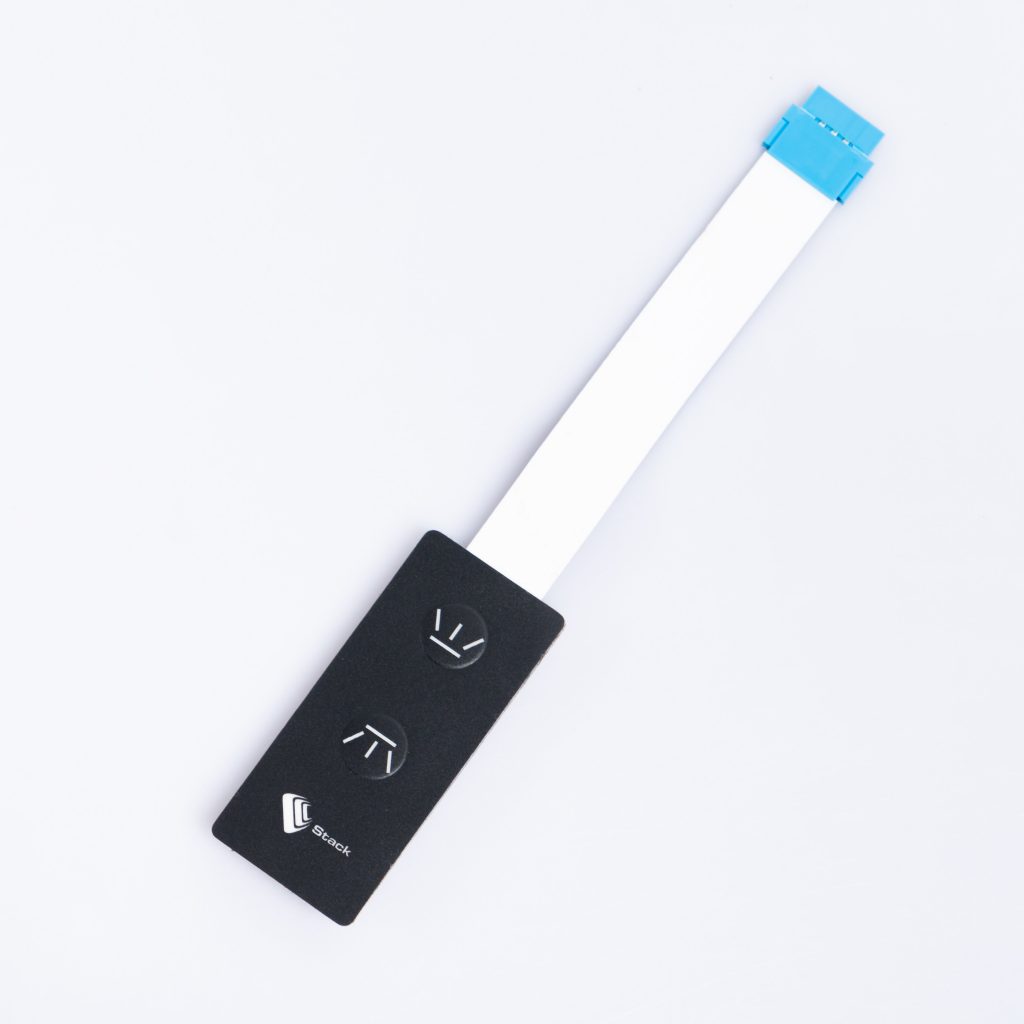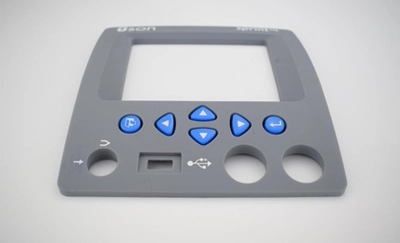Comprehending the Relevance of Membrane Layer Switch Over in Modern Electronics
Membrane layer buttons are integral parts in modern digital devices. They offer a blend of functionality and design that boosts individual communication. Their lightweight and sturdy nature makes them suitable for numerous applications. As sectors progress, the need for personalization and advanced functions expands. Comprehending just how membrane switches over add to development reveals their relevance fit the future of electronic devices. What lies ahead for this modern technology?
The Fundamentals of Membrane Layer Change Modern Technology
Commonly overlooked, membrane button modern technology plays a necessary role in the contemporary electronics landscape. These gadgets, composed of numerous layers, work as user interfaces for numerous digital items, varying from house devices to clinical devices. A common membrane button contains a visuals overlay, a spacer layer, and a circuit layer, which are carefully put together to develop a practical interface.When pressure is applied to the overlay, the circuit layer is completed, enabling signals to be sent to the tool. This innovation is understood for its flexibility, allowing customization in shape, capability, and design to fulfill certain individual needs. Furthermore, membrane layer buttons are thin and lightweight, making them ideal for applications where room is a premium. Their durability and resistance to ecological elements additionally enhance their charm, guaranteeing they can endure rough problems while preserving functionality. On the whole, membrane button innovation is integral to producing user-friendly and reliable electronic devices

Secret Advantages of Membrane Layer Switches Over
Membrane switches over deal numerous vital advantages that make them a preferred selection in different electronic applications. Their layout enables for a compact kind aspect, enabling suppliers to produce light-weight and sleek tools. Furthermore, membrane layer switches are immune to dust, dampness, and chemicals, which improves their durability and long life sought after settings. The tactile responses offered by these buttons can enhance customer experience, making them intuitive and very easy to operate.Furthermore, membrane switches can be tailored with diverse graphics and colors, permitting unique branding possibilities. The manufacturing procedure is generally economical, specifically for high-volume production, as it minimizes assembly time and streamlines design. Membrane layer switches require very little upkeep, adding to reduced total operational costs. These advantages highlight their expanding appeal in modern-day electronic devices, where integrity and user-friendly interfaces are important.

Applications Throughout Different Industries
The adaptability of membrane switches over enables their prevalent adoption throughout various sectors. In the medical area, they are typically made use of in diagnostic tools and client surveillance systems, providing a durable interface immune to contaminants. The vehicle industry uses membrane layer switches for dashboard controls, boosting user experience with streamlined designs that stand up to extreme conditions. In consumer electronic devices, they act as control panels for tools such as microwaves and coffee makers, supplying an user-friendly interface that is simple to tidy. The aerospace sector utilizes membrane layer buttons in cockpit controls, where dependability and room efficiency are vital. In addition, the industrial industry leverages these switches in machinery and control systems to ensure durable procedure in demanding environments. This broad variety of applications emphasizes the adaptability of membrane switches, making them indispensable components in improving performance and customer communication throughout varied technical landscapes.
Customization and Design Versatility

Future Patterns in Membrane Switch Development
Arising fads in membrane get redirected here layer switch growth indicate a growing emphasis on improved functionality and integration with wise innovations. As customer demand for extra innovative digital gadgets boosts, manufacturers are focusing on developing membrane layer switches that not just offer fundamental operational duties but also incorporate attributes like touch sensitivity, backlighting, and haptic feedback.Furthermore, developments in products are expected to improve durability and ecological resistance, making membrane switches appropriate for diverse applications in sectors such as health care, automobile, and customer electronics. The assimilation of capacitive touch innovation is likely to come to be much more widespread, enabling sleeker layouts and enhanced user interfaces. membrane switch.Additionally, the increase of the Internet of Points (IoT) is prompting the growth of membrane changes that can communicate wirelessly with various other devices, improving interconnectivity. Overall, the future of membrane layer button innovation shows up promising, driven by technology and the pursuit of user-friendly remedies
Regularly Asked Concerns
Exactly How Do Membrane Switches Contrast to Typical Mechanical Buttons?
Membrane switches, being a lot more space-efficient and read this providing a streamlined design, contrast with conventional mechanical buttons that give tactile responses. The former commonly include adjustable graphics, while the last usually assure longevity and integrity in various applications.
What Products Are Frequently Utilized in Membrane Switch Manufacturing?
Membrane buttons are usually produced utilizing products such as polyester, polycarbonate, and printed conductive inks. These products supply versatility, responsiveness, and toughness, making them appropriate for different applications in electronic tools and user interfaces.
Can Membrane Changes Be Fixed or Recycled?
Membrane switches can commonly be fixed, especially if small concerns occur, such as glue failing or surface area damages. Nonetheless, complete reuse is generally restricted due to wear and potential degradation of materials over time.
Just How Do Environmental Variables Influence Membrane Layer Switch Performance?
Environmental factors, such as temperature level, moisture, and exposure to chemicals, significantly influence membrane button performance. Severe conditions can result in deterioration, affecting responsiveness and longevity, eventually jeopardizing the functionality of the device in different applications.
What Is the Typical Life-span of a Membrane Layer Change?
The regular lifespan of a membrane layer switch normally varies from 1 to 5 million actuations, relying on factors such as use frequency, ecological problems, and the materials used in manufacturing, influencing durability and performance longevity. A common membrane layer button consists of a graphic overlay, a spacer layer, and a circuit layer, which are thoroughly constructed to produce a useful interface - membrane switch.When stress is used to the overlay, the circuit layer is finished, enabling signals to be transmitted to the gadget. The responsive responses given by these switches can improve user experience, making them simple and user-friendly to operate.Furthermore, membrane switches can be tailored with varied graphics and colors, enabling for special branding possibilities. As customer demand for more sophisticated electronic devices increases, makers are focusing on producing membrane layer changes that not just serve basic functional duties however additionally include functions like touch level of sensitivity, backlighting, and haptic feedback.Furthermore, improvements in products are expected to improve sturdiness and ecological resistance, making membrane switches over ideal for varied applications in sectors such as medical care, automobile, and consumer electronic devices. The combination of capacitive touch innovation is most likely to become more common, enabling for sleeker styles and improved customer interfaces.Additionally, the surge of the Internet of Points (IoT) is motivating the advancement of membrane switches over that can connect wirelessly with other tools, improving interconnectivity. Membrane layer buttons, being more space-efficient and using a smooth style, contrast with traditional mechanical switches that provide responsive comments